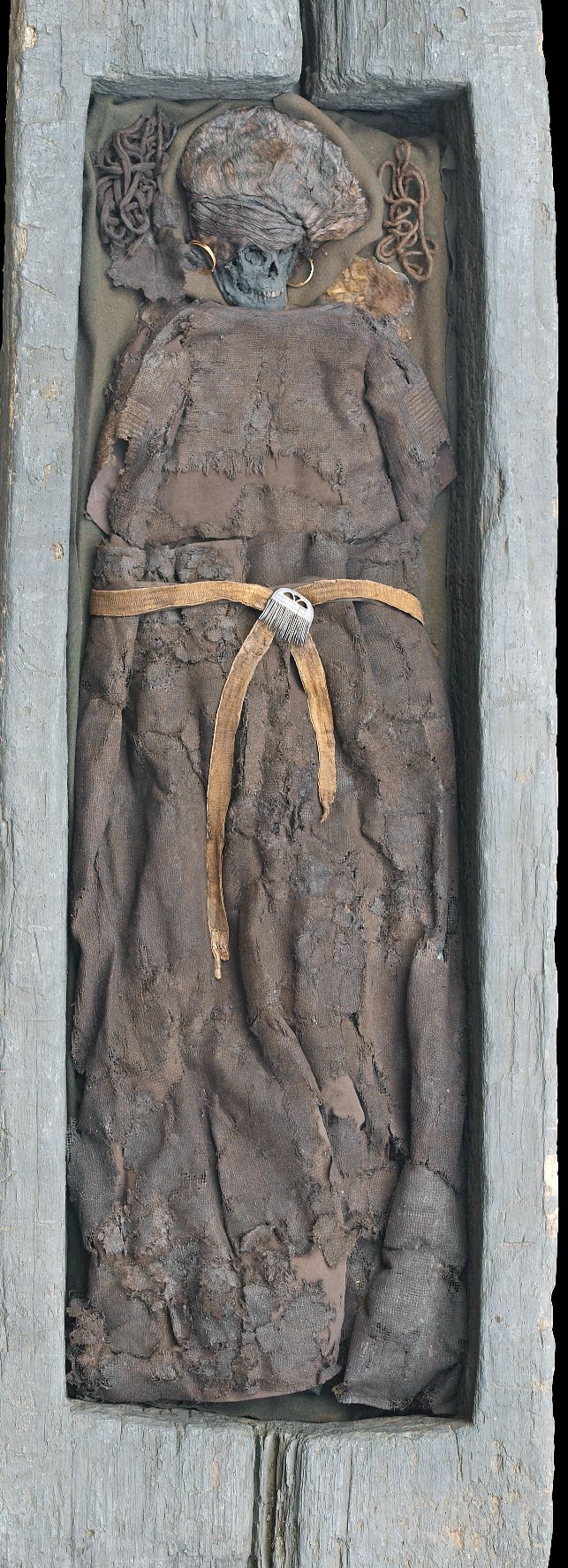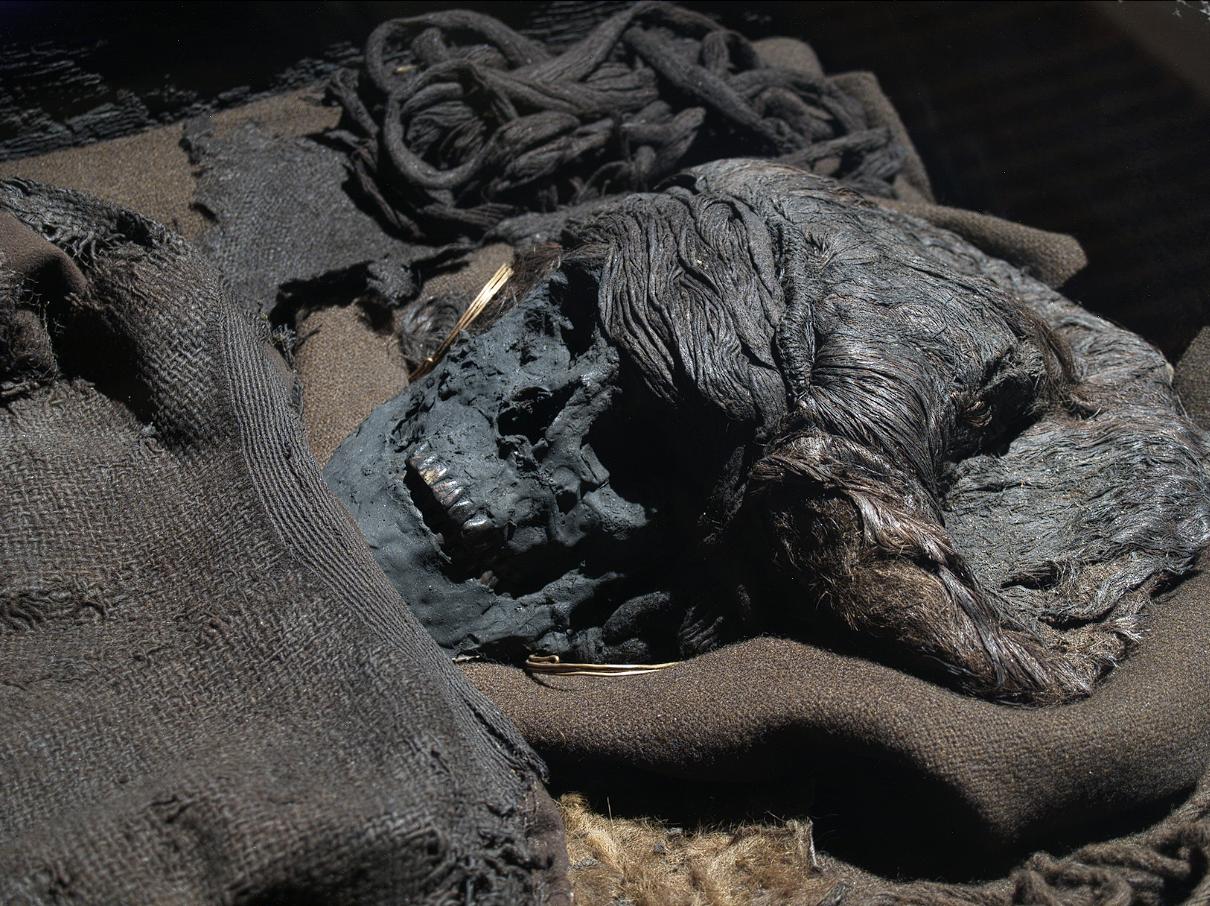The Skrydstrup Woman, unearthed from a Southern Jutland burial mound, presents a captivating portrait of a Bronze Age woman of distinction, her existence shrouded in mystery yet illuminated by the exquisite artifacts that accompanied her into the afterlife. Her remarkably preserved attire, elaborate adornments, and meticulously styled hair offer tantalizing clues about her status and potential role in her society.

A Burial of Distinction: Artifacts of Prestige
The Skrydstrup Woman’s burial was not a simple interment; it was a carefully orchestrated display of wealth and status, reflecting her importance within her community.
Garments of Affluence: Wool and Gold
- Her well-preserved wool sweater and skirt, crafted with intricate detail, suggest a level of craftsmanship and material wealth beyond the ordinary.
- The delicate horn comb, fastened to her woven belt, and the large gold earrings adorning her ears further underscore her privileged position.
- A necklace, resting around her neck, completed the ensemble, adding to the aura of elegance and sophistication surrounding her.
Elaborate Hair: A Symbol of Status and Skill
- Perhaps the most striking feature of her burial was her meticulously styled hair, two feet long, braided and secured in an elaborate updo with a horsehair net.
- This intricate hairstyle suggests a high level of skill and time dedicated to its creation, likely reflecting her social standing and access to specialized services.
- The preservation of her hair, in such remarkable detail, offers a unique glimpse into the fashion and grooming practices of the Bronze Age elite.
Hints of Privilege: Diet and Dental Health
- Her strong, cavity-free teeth, indicative of a childhood diet rich in nutrients, further support the notion that she belonged to a privileged class.
- Access to a balanced and nutritious diet would have been a luxury in the Bronze Age, suggesting her family or social group enjoyed a level of prosperity.
- This detail reinforces the image of a woman accustomed to a life of relative comfort and abundance.
A Mystery Unveiled: Decoding Her Role
While the artifacts surrounding the Skrydstrup Woman offer clues about her status, her exact role in her society remains a mystery, sparking speculation and intrigue.
Potential Roles: Leadership, Reverence, and Beyond

- A Leader or Priestess: The elaborate nature of her burial and her well-preserved attire suggest she may have held a position of leadership or religious significance. Her clothing and adornments could be representative of a ceremonial role.
- A Revered Figure: The care taken in her burial, including the meticulous styling of her hair, could indicate she was a revered figure within her community, perhaps a healer, storyteller, or wise woman.
- A Noblewoman of High Status: Her access to fine garments, gold jewelry, and a nutritious diet points to her belonging to a noble or elite class, with influence and power within her society.
- A Symbol of Wealth and Power: Her burial could have been a way for her family or community to display their wealth and power, solidifying their social standing and influence.
The Enduring Enigma: A Window into the Bronze Age
The Skrydstrup Woman remains an enigma, her story shrouded in the mists of time, yet her burial offers a fascinating window into the lives and beliefs of Bronze Age people.
A Tapestry of the Past: Connecting with Ancient Lives
- Her story invites us to imagine the lives of those who lived thousands of years ago, to ponder their beliefs, customs, and social structures.
- Her burial serves as a tangible connection to the past, reminding us of the enduring human fascination with beauty, status, and the mysteries of life and death.
- The Skrydstrup Woman’s legacy continues to intrigue and inspire, sparking curiosity and fueling our desire to unravel the secrets of the Bronze Age.

CÁC TIN KHÁC
Mary Walton: The Forgotten Inventor Who Helped Clean Up America’s Cities
Tomb of Queen Nefertari in the Valley of the Queens, Egypt
Discover the Hypostyle Hall of the Temple of Hathor at Dendera
Venus de Losange: Unveiling the Mystery of a 20,000-Year-Old Paleolithic Icon